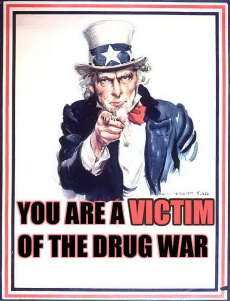 The war on drugs is a term used to describe the federal government’s attempts to end the manufacturing, import, export, sale and use of illegal drugs through a series of anti-drug initiatives all aiming at the common goal of ending drug abuse.
The war on drugs is a term used to describe the federal government’s attempts to end the manufacturing, import, export, sale and use of illegal drugs through a series of anti-drug initiatives all aiming at the common goal of ending drug abuse.
President Dwight D. Eisenhower said in the New York Times that there is “a new war on narcotic addiction at the local, national and international level, with the establishment of an Interdepartmental Committee on Narcotics.” This was back on November 27, 1954. Eisenhower was responsible for creating and organizing the executive branch for “anti drug efforts.” TRecently, some The actual phrase “war on drugs” came from the mouth of President Richard M. Nixon at a press conference on June 17, 1971. During this press meeting Nixon described illegal drugs as “public enemy number one i the United States.”
Here is a basic chronology of the Federal Government’s Anti-drug Policy from early 20th century up till now:
1914: The Harrison Narcotics Tax Act regulates the distribution of narcotics. Heroin and other opiates become regulated.
1937: The Marihuana Tax Act, which extends federal restrictions to cover marijuana(properly spelled here).
1954: The Einsenhower Administration takes a significant, symbolic step in establishing a U.S. Interdepartmental Committee on Narcotics.
1970: The Comprehensive Drug Abuse Prevention and Control Act of 1970 which establishes a federal anti-drug policy.
The human cost on the “War on Drugs” can be roughly calculated. According to the bureau of Justice Statistics 55% of federal prisoners and 21% of state-level prisoners are incarcerated on drug related offenses. Over 500,000 people are currently incarcerated as a result of anti-drug laws. That’s roughly the entire citizen population of Las Vegas, or all of Tucson in prison for a drug law that did not exist before 1970. Had all 500,000 of these prisoners been born just 43 or so years earlier they would be enjoying life on the outside, fresh air, and less prison related violence.
Can we begin to calculate the emotional costs that occur when a non-violent recreational drug user is thrown into the system alongside rapists, pedophiles and murderers? Let’s not forget the drug trade created by the inmates need matched with certain business savvy guards. Then there is a massive amount of gang activity that occurs as a result of these drug laws and prohibitions and the countless numbers of gang related homicides, both inside the prison and back out on the streets.
The White House’s National Drug Control Strategy Budget showed that the federal government spent around $22 billion on the “War on Drugs” for 2009 alone. State spending is more difficult to determine but Action America (link at bottom of the article) cited a 1998 Columbia University study which found that states spent over $30 billion on drug law enforcement during 2009.
Public opinion regarding the “War on Drugs” is poor. Recently 76% of voters in a Zogby poll described the “War on Drugs” as a failure. In 2009 the Obama administration even went so far as to announce that it would no longer use the colloquialism “War on Drugs” to describe federal anti-drug efforts. Recently the Global Commission on Drug Policy issued a report that “The War on Drugs has Failed.”
